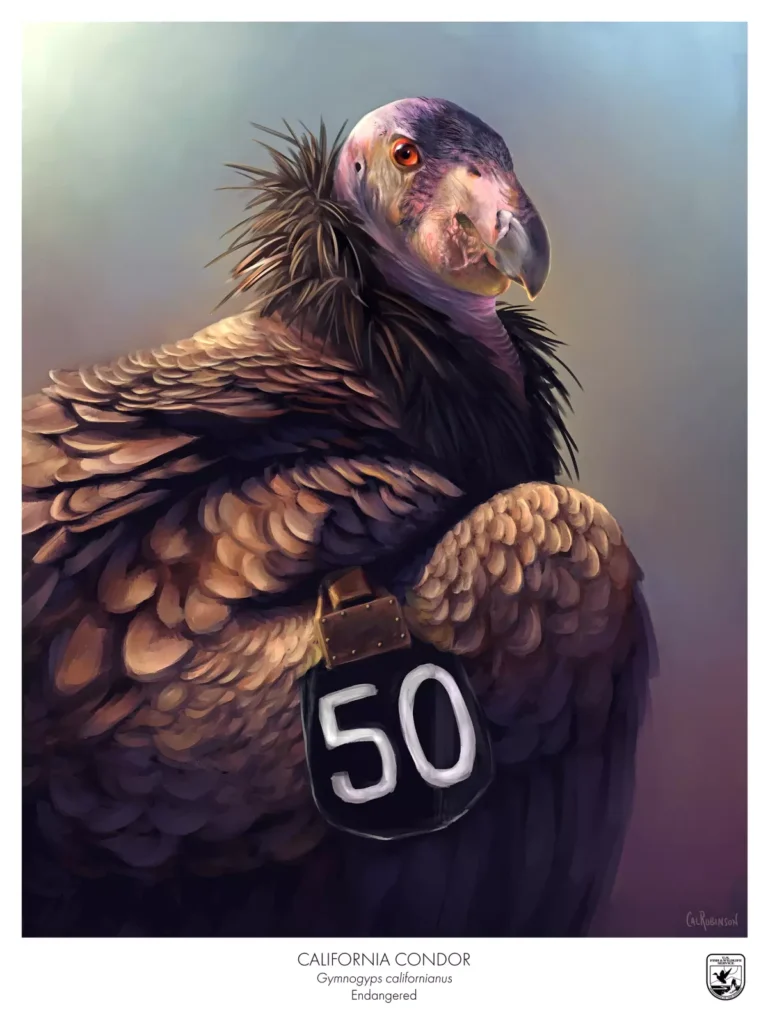New USFWS Art Collection Celebrates California Condors, Other Endangered Species
The U.S. Fish and Wildlife Service is commemorating the 50th anniversary of the Endangered Species Act with a collection of artist renderings of the species. From the Pacific Southwest Region, the California condor is one such painting.

Here’s more about the condor (see above) that’s featured in the collection:
The portrait was based on Condor 550, a condor born in Pinnacles National Park and a true success story of the California Condor Recovery Program. She survived lead poisoning, found a mate and became a mother. She continues to nest with her mate, Condor 652, on the California coastline near Big Sur. The portrait even captures 550’s identification tag (black colored tag with the number 50 on it), which the artist used to tie the portrait back to the 50th anniversary of the ESA.
And here are some details about Condor 550’s story:
In early May 2010, discussions between the biologists at Pinnacles National Park, Los Angeles Zoo and U.S Fish and Wildlife Service determined that 550 should be removed from the nest and taken to the Los Angeles Zoo for treatment. Condors receive chelation therapy to treat lead poisoning which involves providing medicine to the bird as a series of daily shots. Condor 550 responded well to the treatment and fully recovered. She stayed at the zoo and was raised alongside other young condors until 2011.
In August 2011, 550 was returned to Pinnacles National Park. She was held in an outdoor structure to reacclimate to the environment and was released back into the wild in October.
In the years since, condor 550 expanded her home range beyond Pinnacles National Park and took up residence on the Big Sur coast. There, she paired with condor 652. They started nesting in 2020, and their first young made it to fledge, but died shortly after. They nested again in 2021, and successfully raised another young bird to fledging.
“We are excited to see condors 550 and 652 nesting again this year, and we’re hoping that another chick will hatch soon,” said Welch. “It’s so touching to observe how gentle condor parents are with their newly hatched, fluffy chicks, and it means so much to see them bringing up the next generation.” …
The Condor Recovery Program continues to address threats to the species in the wild and support captive breeding, release and monitoring of condors at field sites. The program also includes ongoing research, education and outreach. Avian influenza has become a new threat to the condor, and this program and its partnerships are more important than ever for the species’ recovery.
As for condor 550, “She still makes her way over to Pinnacles regularly just like all the other condors. In general, the central coast population of condors routinely traverses back and forth between the coast and the inland range that includes Pinnacles. It takes them less than an hour flight time to go between the two!” said Welch.



